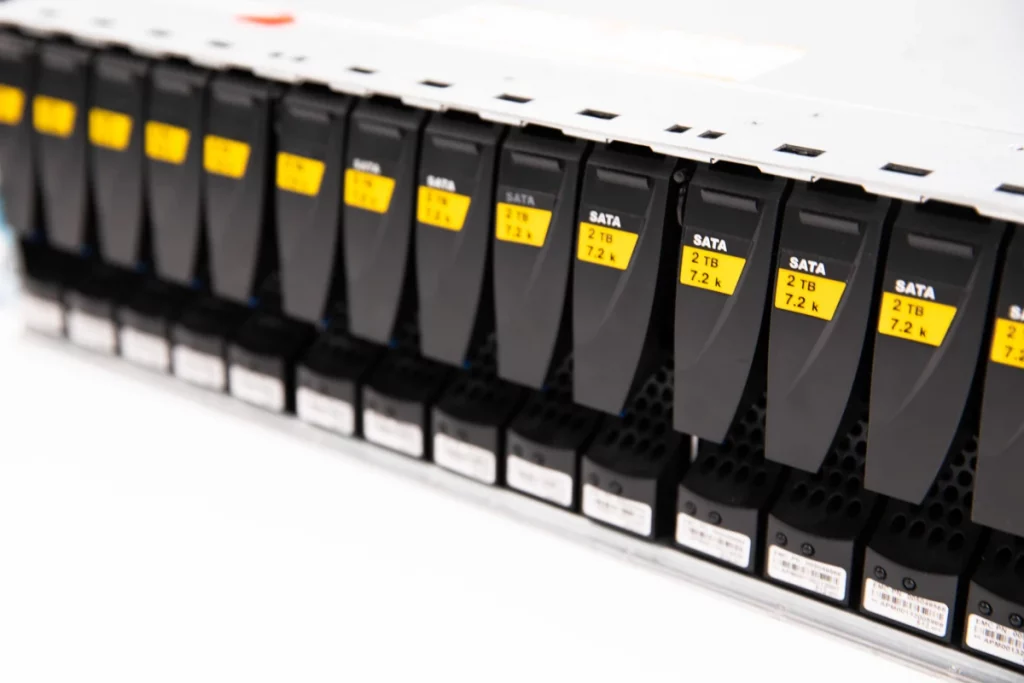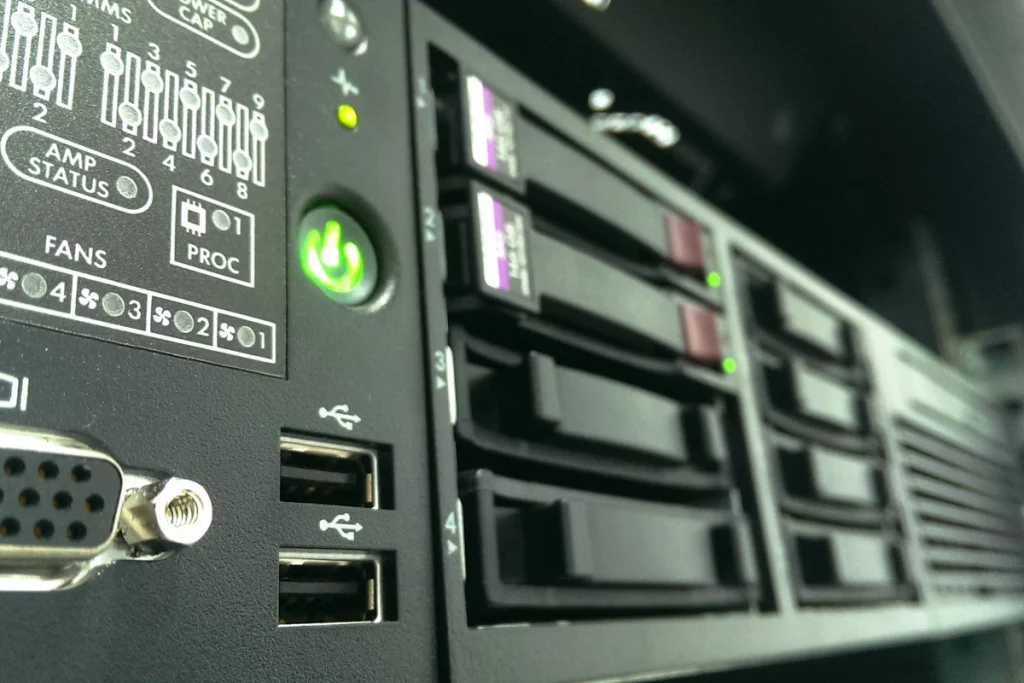In today’s digital age, businesses rely heavily on servers for their data storage needs. A server crash can be disastrous for any organization, causing loss of critical data, downtime, and significant financial losses.
In this blog post, our team will explore some of the reasons why servers crash, what to do when a data center crashes, and the data recovery services that RAID Recovery Services provides for servers.
Reasons for Server Crashes
Several reasons can cause a server to crash. Some of these include hardware failures, software issues, network problems, and human error. Let’s take a closer look at each of these factors.
Software Issues
Software issues are another common cause of server crashes. These can be due to bugs, programming errors, or compatibility issues between different software components. In some cases, outdated software may also lead to server crashes.
To prevent such issues, it is essential to keep your server’s software up-to-date and regularly check for any known bugs or conflicts between applications. Regularly testing your code and implementing proper error handling can also help prevent software-related crashes.
Hardware Failure
A server comprises several hardware components, and if any one fails, it can result in the server crashing. This can be due to the failure of various elements, such as the power supply unit, hard disk, or RAM.
To prevent such crashes, it is crucial to regularly check and maintain your server’s hardware components.

This includes monitoring temperature levels, checking for firmware updates, and replacing faulty hardware as soon as possible.
Network Problems
Network problems, such as connectivity issues or congestion, can also cause server crashes. If the server can’t communicate with other network devices, it may crash.
To avoid such issues, ensure that your network infrastructure is properly configured and maintained. This includes regularly monitoring network traffic and promptly addressing any issues or bottlenecks.
Human Error
Server crashes can sometimes also occur due to human error. This can be caused by misconfiguration, improper maintenance procedures, or accidental deletion of critical files.
Proper training and protocols for server administrators are crucial to preventing such crashes. Regular backups and automation tools can also lower the risk of human error.
What to do When a Data Center Crashes
When a data center crashes, it can be a stressful and frustrating experience. However, taking the right steps to minimize damage and get your server back up and running as soon as possible is essential. Here are the steps to take when a data center crashes:
Identify the Cause
It is critical to identify the cause of the crash before taking any further action. This will help you determine the best course of action to take to resolve the issue.
Contact IT Team
If you have an in-house IT team, contact them immediately to help you diagnose and resolve the issue.
Back up your Data
Before attempting any data recovery or repair, it is essential to back up your data to prevent further loss of critical data.
Do not attempt DIY
DIY server repairs can worsen damage and risk data loss. It’s safer to consult experts and avoid data recovery software for server issues.
By taking these preventative measures, you can significantly reduce the risk of server crashes and ensure the smooth functioning of your server. Remember, prevention is always better than trying to fix a crash after it has already occurred.
Prevention of Server Crashes
There are several steps you can take to prevent server crashes. These include:
Regularly monitoring and maintaining hardware components to identify and address potential issues before they escalate.
Keeping software up-to-date and regularly testing for any bugs or conflicts between applications.
Implementing proper error handling in code to prevent crashes caused by programming errors.
Ensuring proper network infrastructure configuration and addressing any network issues promptly.
Providing proper training and protocols for server administrators to minimize the risk of human error.
Implementing redundancy and regularly backing up data to mitigate the impact of hardware failures or accidental deletions.
Having a well-defined disaster recovery plan in place to quickly restore services in case of a server crash.
Server Crash Recovery with RAID Recovery Services
Our data recovery company offers comprehensive restoration services for servers. They can recover data from a wide range of server brands, including HP, Dell, IBM, and more. In addition, our engineers can recover data from various RAID arrays, including RAID 0, RAID 1, RAID 5, RAID 6, and more. With our RAID data recovery, we are ready to help you restore your files in case a server fails.

If you need urgent data recovery, RAID Recovery Services offers emergency recovery services, where they can start working on your server crash case immediately, 24/7.
We also offer remote data recovery services, where our data recovery engineers can work on your server remotely without the need for you to send your server to their facility.
A server crash can be a frustrating and stressful experience for any organization. However, by taking the right steps, such as identifying the cause, contacting a professional data recovery service provider like RAID Recovery Services, backing up your data, and avoiding attempting any repairs yourself, you can minimize the damage and get your server back up and running as soon as possible.
If you are looking for a top-level company to recover your lost data, RAID Recovery Services is a great choice. With our comprehensive range of data recovery services for servers, you can trust them to recover your critical data quickly and efficiently.
Do not wait until a server crash occurs. Contact RAID Recovery Services today to learn more about their services and how we can help protect your critical data and avoid irreversible server data loss.
Frequently Asked Questions
How long does it take to fix a crashed server?
Fixing a crashed server varies from minutes to days, depending on the crash’s cause and severity. A disaster recovery plan can reduce downtime and speed up resolution.
How can I monitor my server for potential issues?
Various monitoring tools can detect server issues like high CPU usage or low disk space, providing real-time alerts for proactive measures. Regular system log checks and performance tests also help identify problems.
Can a crashed system be fixed?
A crashed system can often be repaired, but recovery depends on the cause of the crash. Regular maintenance, consistent backups, and strong disaster recovery plans are key for fast restoration and crash prevention.
Can server crashes be prevented completely?
While it may not be possible to prevent server crashes entirely, implementing proper maintenance procedures and disaster recovery plans can significantly reduce their occurrence.
Is it possible to recover all data lost during a server crash?
Recovery from a server crash depends on the crash’s severity and cause. Sometimes, full data recovery is possible; other times, data loss may be partial or total. Quickly getting help from a reputable data recovery service can increase the chances of success.